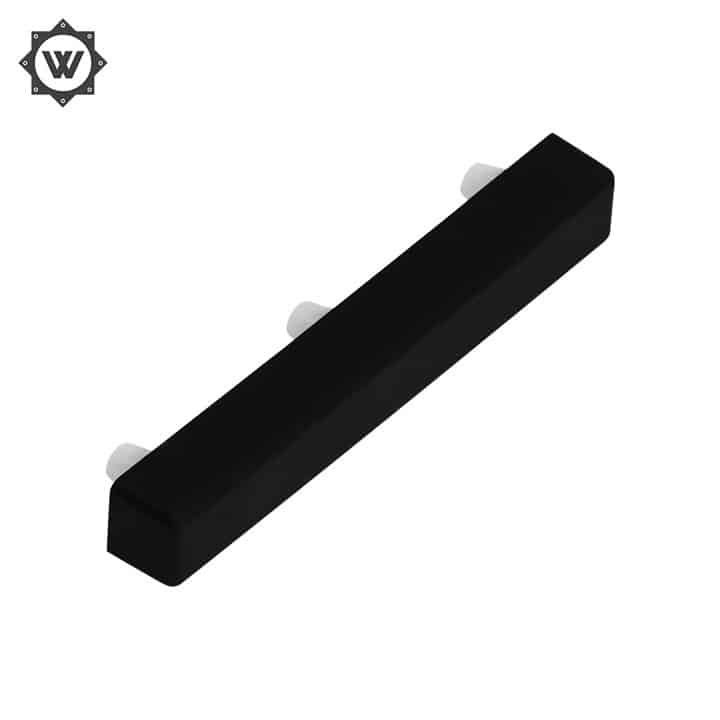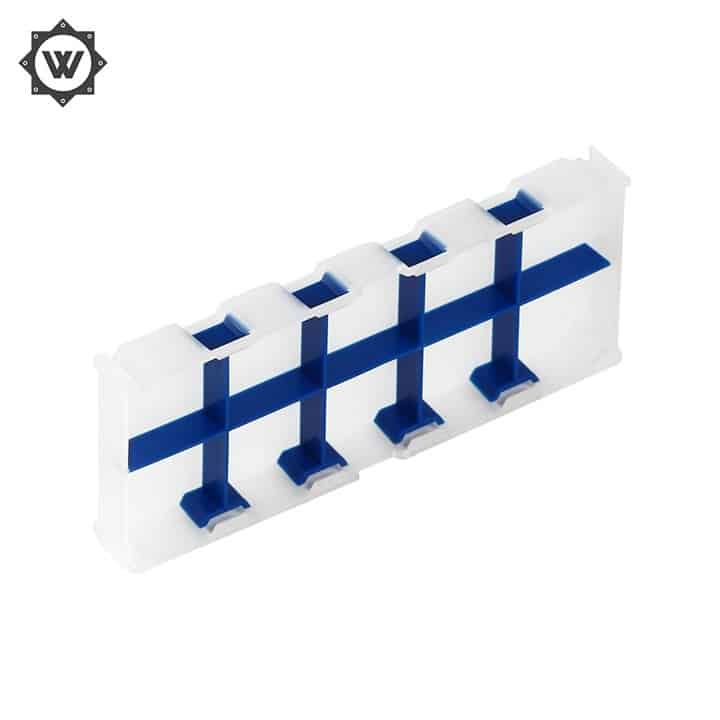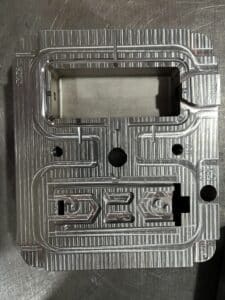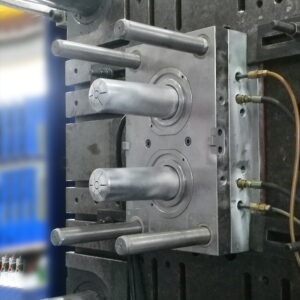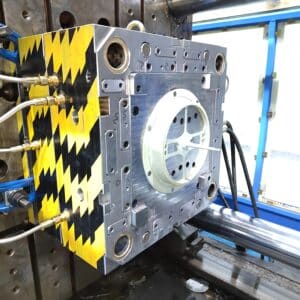Secondary injection molding technology In the past 10 years, secondary injection molding technology has completely changed the aesthetic standards, design ideas and functional requirements of consumer goods. Medical device manufacturers also recognize the potential advantages of this technology and continue to expand its application in the medical field. The secondary injection molding technology is famous for creating a “soft surface”, but it also has many other functions, such as ergonomic design, two-color appearance, brand identity and feature improvement. With this technology, the product’s functions (such as noise reduction, shock absorption, waterproof, anti-collision) and added value can be increased. Secondary injection molding, like co injection molding, dual injection molding and sandwich injection molding, belongs to multi material injection molding technology. The basic idea of multi material injection molding is to combine two or more materials with different characteristics to improve product value. In this paper, the first kind of injection material is called the base material or the base material, and the second kind of injection material is called the covering material.
In the secondary injection molding process, the covering material is injected into the upper, lower, surrounding or inner parts of the substrate to form a complete part. This process can be completed by multiple injection molding or embedded injection molding. The commonly used covering material is elastic resin.
Multiple injection molding: If the structure of the covering material allows, multiple injection molding is a good method for processing medical devices. This technology requires a special injection molding machine equipped with multiple barrels to inject different resins into one injection mold. The barrel shall be placed side by side or in L-shape, and the resin shall be injected into the mold by one or more injection points. When the same injection point is used, it is called co plasticity, and the composite parts produced are core resin materials coated by the outer layer. When multiple injection points are used, it is called secondary injection molding. One material is molded on another material to produce a multi-layer structure. However, multiple injection molding is not applicable to all products. During secondary injection molding, the sliding block must be moved or the mold core must be moved to another mold cavity. Another method is to send the mold core to another injection molding machine.
Embedded injection molding: To produce fully covered injection molding handles and other products, embedded injection molding is required. In order to achieve full coverage, the substrate must be removed from the original cavity and placed into another core and cavity to inject the covering material. In this process, another mold should run on the same injection molding machine or another injection molding machine with different dimensions (depending on the size of the injection molding parts) at the same time. Generally, the substrate is much larger than the covering material, and may need to be preheated to make the surface temperature close to the melting point of the covering material, so as to obtain the best bonding strength.
In mold assembly Secondary injection molding is sometimes referred to as in mold assembly, because the two materials are finally completely combined together, rather than just producing layered structures. This technology can be used for either individual parts or component materials. Regardless of the application, it is critical to ensure that the substrate and covering materials achieve the required mechanical or chemical bond strength.
Precautions for multi material injection molding. Generally speaking, to strengthen the adhesion, the melting temperature of the resin of the covering material should be the same as that of the base material. If the melting temperature of the covering material is too low, the substrate surface cannot be melted, and the adhesion between them is not strong enough. However, if the melting temperature is too high, the base material will be softened and deformed. In serious cases, the covering material will penetrate the base material, causing the processing failure of parts. Therefore, the selection of matching materials can ensure good adhesion. In general, matching materials should have similar chemical properties or contain matching composite components. When the base material does not match the covering material, only mechanical interlocking can be formed, not chemical bonding. There are also some problems to be noted in multi material injection molding. The most common ones include: insufficient chemical or mechanical bonding strength between polymers, incomplete filling of single or multiple parts, and flash of single or multiple parts.
The injection molding machine must maintain injection consistency. In addition, the ratio of the injection volume of the barrel of the injection molding machine to the size of the injection molded part is also an important factor affecting the injection quality. This ratio is critical for all injection molding operations, especially in secondary injection molding. The check device can separate the covering materials like a sluice. When the secondary injection materials are all metal, the check device is easy to operate. If the metal substrate and more elastic plastic are used, the check device is difficult to operate. Material selection) There are many factors in the selection of secondary injection molding resin materials, on the one hand, it depends on the characteristics of the substrate, on the other hand, it depends on the application performance. Specifically, there are the following points:
·Chemical corrosion resistance (according to cleaning and other operation requirements).
·Flame retardancy (in line with ecological and environmental protection requirements). The ecological and environmental protection label is a sign indicating that the product meets the environmental and social standards.
·Abrasion resistance (to avoid depression or falling off).
·Shore hardness (compliance with softness or other requirements).
·Medical specifications (FDA, USP Class VI, ISO10993 and biocompatibility requirements).
·Sterilization type (steam, gamma ray, etc.).
·Melting point (in accordance with the application temperature requirements, without softening or deformation).
·Bonding mode (mechanical interlocking is formed when two materials do not match, and chemical bonding is formed when two materials match).
In the past 10 years, covering materials have made great progress, and a variety of elastic resins have been developed. For example, thermoplastic polyurethane (TPU), styrene ethylene/butylene styrene polymer (SEBS), copolyester, copolyamide, thermoplastic rubber (TPR) and thermoplastic vulcanized rubber (TPV). In practical application, new polypropylene resin with good adhesion to polypropylene substrate is generally selected.
The Shore hardness of these materials varies greatly. Generally speaking, the higher the hardness of the material, the stronger the abrasion resistance. The texture of the material also affects the hardness. In the resistance test, the materials with strong wear resistance have less loss. For example, the resin with high hardness has less wear when spinning wheel is tested, so the materials with strong wear resistance are often selected for application. The hardness of SEBS resin is very low, less than Shore A 30. The hardness of TPU resin is about Shore A 60, which is similar to the hardness of human hands. In the past, the hardness was generally reduced by adding plasticizers or mineral oils. However, these additives will precipitate (or be called frost) when cleaning or using, which does not meet the requirements of medical applications.
Due to the development of secondary injection molding resin materials, the selection range of base materials is increasingly wide, including acrylonitrile butadiene styrene, polycarbonate and nylon. The expansion of the range of materials provides more space for soft design. But the application of new materials also brings new problems, such as: material bonding, component design and mold operation.
Precautions for process design of secondary injection molding:
In the process design of secondary injection molding, check device, nozzle hole, air outlet and mold surface texture are the key elements.
The backstop device between the base material and the covering material is very important for the bonding effect, and it should avoid gradually thinning or burring the projecting covering material. The covering material is too thin, which will lead to poor adhesion, degumming and curling. A good design of the backstop device should clearly separate the covering material from the base material.
The design of nozzle hole is also important for the success of secondary injection molding. The ratio of runner length to wall thickness is the main factor affecting the bonding effect. According to experience, the ratio should not exceed 150:1. When developing new process design, the ratio should be kept around 80:1. Figure 2 shows the proportional relationship between runner length and wall thickness. In order to shorten the process as much as possible, the nozzle hole should be set at the position with the maximum wall thickness. When using TPE resin, pay attention to the size of nozzle aperture. TPU and other materials need large caliber nozzles to adapt to high viscosity and prevent material degradation due to high shear force. Materials such as SEBS require a higher shear rate to obtain the best flow rate. It is better to use a small caliber nozzle at the initial stage and adjust the nozzle size after the initial sampling. Like the nozzle hole, the air outlet is also an important factor affecting the bonding effect. How to control the air margin is a big problem. If the control is not good, the bonding may not be firm and the burrs may be filled. The depth of the air outlet is critical to prevent burrs. According to the viscosity of the covering material, the depth of the air outlet should be 0.0005-0.001 inch.


